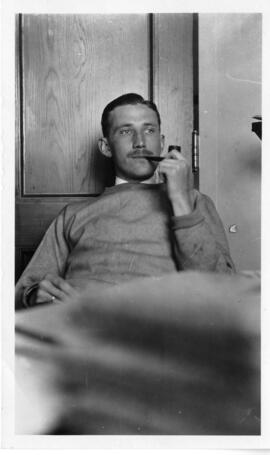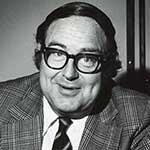- Person
- 1944-2020
Ron O’Dor was a Dalhousie professor and biologist widely known for his contributions to cephalod ecology and physiology, which he achieved through innovated interdisciplinary techniques including behaviour and ecology, physiology and innovative telemetry tracking techniques.
Born in Kansas City, Missouri, he completed his BSc in biochemistry at University of California, Berkley, and his PhD in medical physiology at the University of British Columbia. After a postdoctoral fellowship at Cambridge University in England and the Stazione Zoological in Naples, in 1973 he was hired in the Department of Biology at Dalhousie University. He continued with his work on oceanic squid, developing an active research lab at the university’s Aquatron seawater facility.
O’Dor published frequently in scientific journals and supervised over forty graduate students and numerous honours students. He served as Chair of Biology, Director of the Aquatron facility, and Associate Dean of the Faculty of Science. In addition, he was a frequent visiting scientist or research fellow at institutes and with research projects around the globe.
In 2001 O'Dor was appointed Senior Scientist with the Census of Marine Life, a ten-year international program to assess and explain the diversity and distribution of ocean life. In 2006 he was the key figure behind the establishment of Dalhousie’s Ocean Tracking Network, which became one of Canada’s National Research Facilities. Other achievements include an honorary degree from Lakehead University (2011), Canadian Geographic's Environmental Scientist of the Year award (2009), and the Discovery Centre's award for Professional of Distinction (2012). He died in 2020.



![George E. Wilson, ca. 1931 [PC1, Box 1, Folder 33, Item 2]](/uploads/r/null/b/3/c/b3c623b512c6ef60547a9eb9a9b93e593f622d27902116235b62adb777a62e93/PC1_1_33_002_141_142.jpg)
![Howard Murray, McLeod Professor of Classics [PC1, Box 45, Folder 7, Item 56]](/uploads/r/null/9/2/9/9295d394b04da064d5fb9bfbffd6f67e5773dea5c5f8985bb4c2c07d4b72569a/pc1_45_7_056_141_142.jpg)
![Hugh Bell [PC1, Box 15, Folder 26, Item 2]](/uploads/r/null/e/0/2/e02bc5b51ab39bb8f607236e022be84b11c4e40e7bc4d7b4fe341c643445e9fe/PC1_15_26_002_141_142.jpg)
![Murray Macneill (Dalhousie Class of 1896), Professor of Mathematics (1906-1942) and University Registrar (1920-1936) [PC1, Box 46, Folder 2, Item 21]](/uploads/r/null/3/d/2/3d2de7aeb3ae1c1db329061036db16453c3f70a631c52dfc4c3f2e913cfa55ab/pc1_46_2_021_141_142.jpg)
![Dalhousie University Senate members at the first Senate meeting held in the new Arts and Administration Building, in January 1952 [MS-2-718, PB Box 13, Folder 12]](/uploads/r/null/5/3/8/5388edfe44b66a9d56f238a1641de9f4fd6e93a3cef2ea3ba6bbeeeeaa2a37e2/MS-2-718_PB13_12_001_142_142.jpg)
![Dalhousie University No. 7 Stationary Hospital brochure [MS-13-2, SF Box 56, Folder 3]](/uploads/r/null/a/c/5/ac57d9b518541ba2a8daa875d424ea8e4c783f6d890dece64efb2da65af30de0/MS-13-2_SF56_3_141_142.jpg)